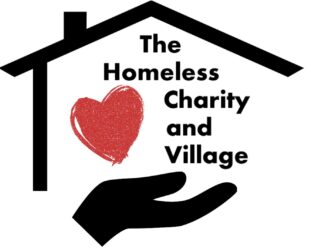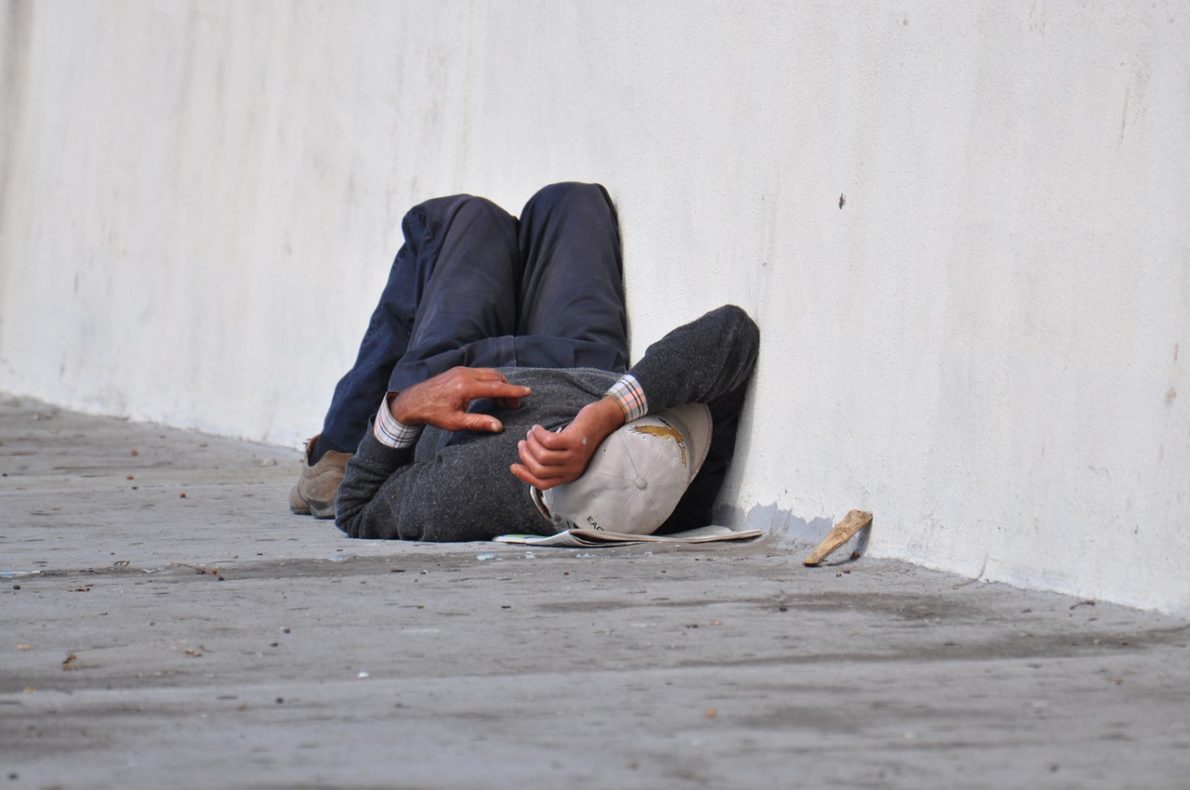I’ve been asked by some on our team for me to paint a picture of who we will become in the future.
This is probably one of my all time favorite activities. I am nothing if not a visionary and dreamer.
I can “blue sky” things all day long.
That said, in this case, I have intentionally taken a very “lead-from-behind” strategy with this organization.
I’m certainly not afraid of leading from the front. But I’m also not too insecure to let others take the operation in particular directions.
My biggest claim to fame in this entire day center and tent city journey is that I was the guy that didn’t say “No.”
I have found that that one word clogs things up more than all the “yeses” you could ever give out.
- Don’t sit in the front of the bus.
- Don’t pray to who you want to pray to.
- Don’t speak in that dialect.
- Don’t read the Bible that way.
- Don’t start a band.
- Don’t become an artist.
I can make an endless list of “No” statements we have all heard countless times.
But how often do you hear the opposite:
- Sit anywhere you want on that bus, we will support you in that civil right.
- Pray to any God you see fit, I love that you have an open mind and open heart to God, or Gods.
- Speak in any “slang” you enjoy, I respect your culture and upbringing.
- Read the Bible any way you’d like. It is a book meant to inspire you in many different ways.
- Dedicate your life to your band. I wish I had done that when I was your age.
- I love your art. Make it your life. The world needs more creativity and inspiration from people like you.
We live in a dualistic world. This or that. Yes or no. Us or them.
We have a very difficult time living in contradiction and unknowing.
So, when a few homeless people put a few tents in my back yard in January 2017 I didn’t know it even happened.
One day I walked out into our backyard and there they were. There were the tents.
I didn’t go rushing up to them and tell them they were doing amazing work. I didn’t see a great vision where these people were becoming activists taking a stand for the right to live in America.
I didn’t do anything great. I didn’t even smile, that I recall.
All I did was go back inside. I don’t think I ever talked to any of them about any of it. I just didn’t say no.
It wasn’t until several months later that I began to take an active role in the evolution of this place.
Very intentionally, this place became homeless run.
My role, as far as the community is concerned, is to only step in if it’s a safety issue or a legal issue.
Sometimes I overstep my bounds on that. But I try to be very diligent in that aspect of things.
These are people that repeatedly tell me that they are treated like children. They desperately want to be treated like the adults they are.
Being an adult comes with a lot of responsibility.
We have no curfews. Couples can be together. And we allow pets.
However, with those rights also come the consequences of adulthood.
People get removed from our facility on a fairly regular basis because they can’t abide by our code of conduct.
Even though they hate that, they very often will return and speak highly of our facility. That’s simply because, I believe, we treat them with dignity and respect.
I also believe they respect that it’s their peers making these judgement calls, not people driving fancy cars wearing Dockers and open collared button down shirts.
That’s a long prelude to “What’s the Blueprint for the Future of The Homeless Charity?”
But I think it’s important for you to understand the background so you can understand the future.
You should also know that we see ourselves as a triage facility.
We talk about the people we deal with as American-born refugees brought about by economic tragedies.
We are trying to stop the bleeding.
Tents in a secure, organized facility is worlds better than a tent out in the woods or on the streets. Living on the streets is extremely dangerous and terrifying.
“Sleeping with one eye open,” is a common saying among people who sleep on the street.
We see ourselves as a very legitimate part of the Housing First initiative.
You can’t possibly work on mental health, physical health and addiction issues if you are merely trying to stay alive and trying to keep your things from being stolen.
This is the entire premise of the Housing First theory.
A tent at our facility is significantly better, and different, than a tent out on the streets.
But the city and other homeless service providers don’t see it that way. A tent is a tent is a tent.
If I could snap my fingers I would create a replica of Community First Village in Austin Texas.
Here’s a picture of one of their streets:
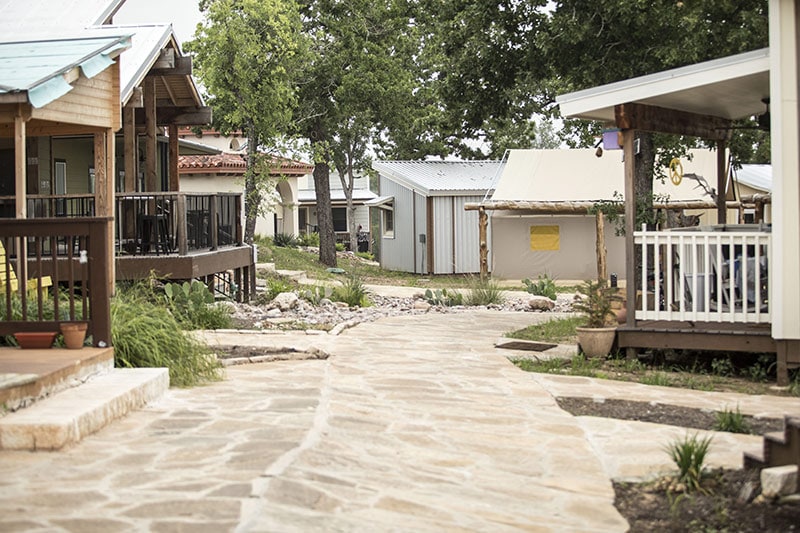
This is their mission statement:
Community First! Village is a 27-acre master planned community that provides affordable, permanent housing and a supportive community for the disabled, chronically homeless in Central Texas. A development of Mobile Loaves & Fishes, this transformative residential program exists to love and serve our neighbors who have been living on the streets, while also empowering the surrounding community into a lifestyle of service with the homeless.
They, like us, are focusing on the people living on the streets.
But the reality is, refugees are put in tents all the time.
Here is a Syrian refugee camp in Jordan:
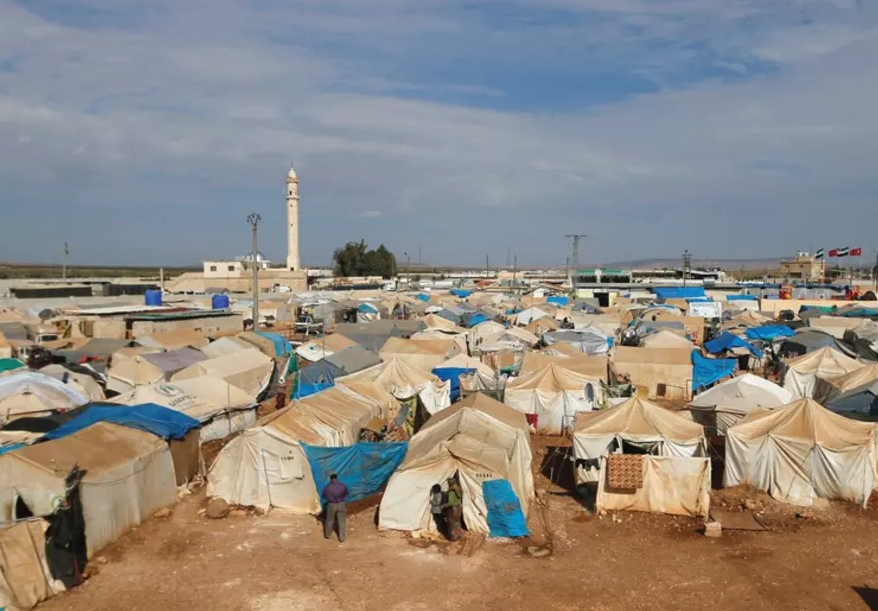
And this in Texas:
The Navy Is Planning Tent Cities for Undocumented Immigrants
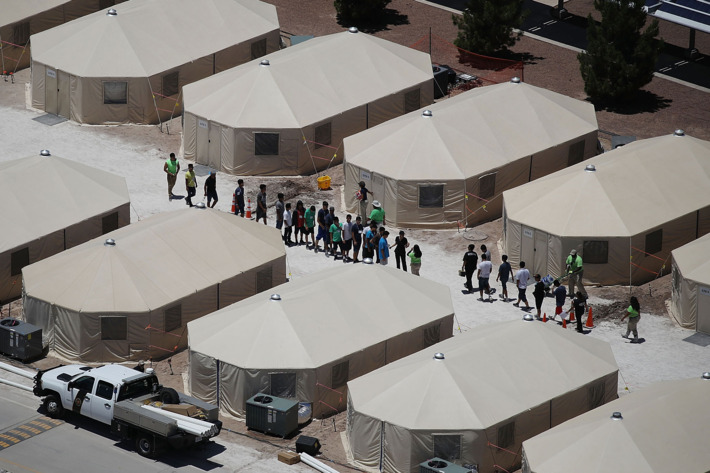
Here’s a picture of our tent city:
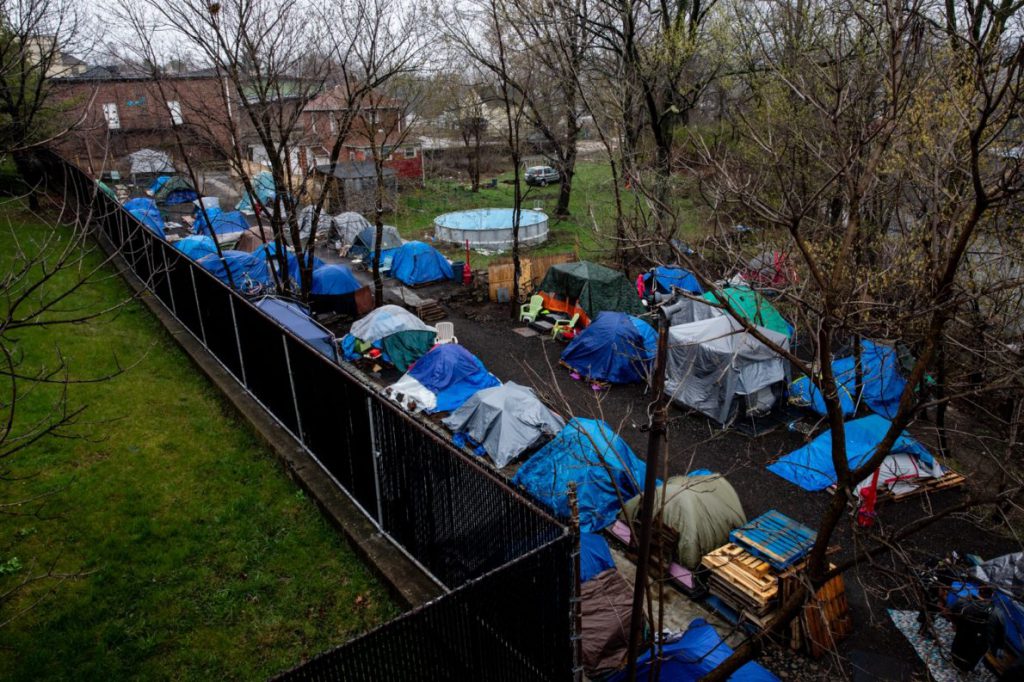
We don’t have United Nations money like the Syrians do in Jordan. And we don’t have Navy money like the illegal immigrants do in Texas.
But we are getting by.
We buy $50 Coleman tents from Amazon and put a tarp over them to keep the rain out.
We do what we can do with the resources we have.
There are over 500,000 homeless people living in shelters and on the streets of America any given night.
I see them not as “the other”, not as “the homeless”. I see them for what they truly are: American citizens that are refugees in their own country.
It is what it is.
A refugee is: “a person who has been forced to leave their country in order to escape war, persecution, or natural disaster.”
This is a natural disaster of economic conditions. If your house is destroyed by a hurricane or a tornado or an earthquake you will be instantly taken care of.
But if you are thrown out of your house because drug dealers own it and come in the middle of the night with baseball bats and guns you are now not a refugee, you are “homeless.”
And being “homeless” doesn’t get you anything.
If your house burns down in the middle of the night, Red Cross is right there to offer you gift cards and supplies, in the middle of the night, to get you immediately to a hotel.
If you lose your house because you get paid $8.15/hour at McDonald’s and your rent is $750/month plus utilities you are now not a refugee because of an economic disaster. You are now homeless with an eviction on your record.
While they are still walking around America, America has nothing for them. They have been pushed out of all the rights and support that America provides for all its other citizens.
If they are lucky, there is a shelter in their city. They must leave their pets behind. Spouses must separate. All their possessions have to be abandoned. That’s the answer for the homeless.
People become homeless all the time because of some very clear and well documented reasons.
According to the most recent annual survey by the U.S. Conference of Mayors, major cities across the country report that top causes of homelessness among families were:
(1) lack of affordable housing
(2) unemployment
(3) poverty,
(4) low wages, in that order.
It’s not because people are lazy, drug addicts. It’s because of economic disasters.
Yet we label them as homeless and then we see them as “the other.” “Those people.”
We disdain the others. We separate from them.
People will publicly admit that they don’t like to see poverty. It makes them feel uncomfortable.
This is my interest. Working with refugees created by economic disasters.
We are starting in Akron. But I see this as a national tragedy.
We should be triaging these people as refugees and not judging them as homeless.
Do I want people in houses? Hell yeah I do.
Would I like a place as amazing as Community First Village? Hell yeah I would.
But until we take care of the people we’ve left to rot on our streets of the richest country the world has ever seen, I’ll do whatever it takes to shelter and feed and cloth these people.
So that’s my vision.
I want to dig down into the darkest, dirtiest places in America (and maybe someday the world) and find people in desperate need and help them. I don’t care what kind of structure we put them in. And quite frankly either do they. They just want fundamental, extremely basic shelter and food.
These people are living in such deplorable and inhumane environments that they literally would likely be happy with a dog kennel, if they could lay down in it. In fact, we had a woman whose dream it was to build a dog kennel with a roof for herself. That’s the realty of America today. I don’t care how it makes you feel. All I care about is getting these people off the streets.
This is why it is so important for this entire operation to be homeless run.
The homeless know what they need even if it might be unsightly for the housed community.
We can’t allow people to be discriminated against because other people don’t want to look at them. We learned that fundamental truth in the Civil Rights Movement.
Yes. Get these people better places to live than tents. But that’s not really my personal interest. I want to find more people that need shelter in a safe environment.
It is very likely that The Homeless Charity works in housing. We’ve already bought our first house. It could be that we work on tiny houses and better structures. But I see that as phase 2 of working with the homeless. Get them off the field and into something with better services. A field medic in war gets a person stabilized and then they take them to a proper hospital. The hospital is phase 2. That might be something like transitional housing.
But you can’t ever get a wounded soldier alive to a hospital unless they are first treated by a field medic.
We can be that process of triage and hospital for the homeless.
But as far as I’m concerned, I want to be the guy in the dirt and muck finding the worst case scenarios of homelessness. That’s where I feel most alive.
